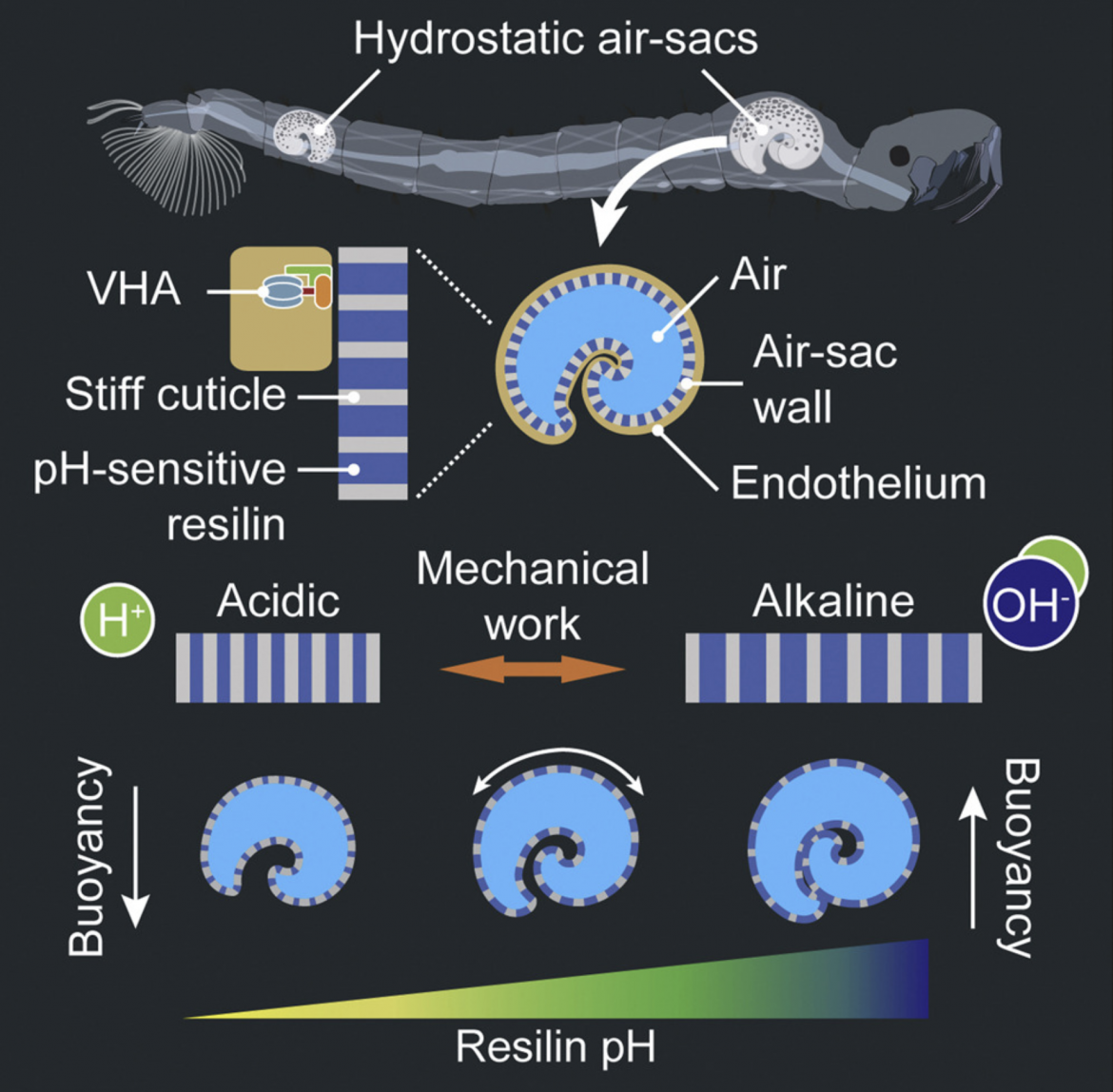
Press release:
UBC Science, January 26, 2022: UBC zoologist solves the 100-year-old mystery of the floating phantom midge
----------------
Aquatic Chaoborus midge larvae are planktonic insects which regulate their buoyancy using air-filled sacs. We have found that bands of resilin in the air-sac wall contract when acidified by endothelial VHA and expand when alkalinized in response to cAMP.
Summary
The freshwater aquatic larvae of the Chaoborus midge are the world’s only truly planktonic insects, regulating their buoyancy using two pairs of internal air-filled sacs, one in the thorax and the other in the seventh abdominal segment. In 1911, August Krogh demonstrated the larvae’s ability to control their buoyancy by exposing them to an increase in hydrostatic pressure. However, how these insects control the volume of their air-sacs has remained a mystery. Gas is not secreted into the air-sacs, as the luminal gas composition is always the same as that dissolved in the surrounding water. Instead, the air-sac wall was thought to play some role. Here we reveal that bands of resilin in the air-sac’s wall are responsible for the changes in volume. These bands expand and contract in response to changes in pH generated by an endothelium that envelops the air-sac. Vacuolar type H+ V-ATPase (VHA) in the endothelium acidifies and shrinks the air-sac, while alkalinization and expansion are regulated by the cyclic adenosine monophosphate signal transduction pathway. Thus, Chaoborus air-sacs function as mechanochemical engines, transforming pH changes into mechanical work against hydrostatic pressure. As the resilin bands interlaminate with bands of cuticle, changes in resilin volume are constrained to a single direction along the air-sac’s longitudinal axis. This makes the air-sac functionally equivalent to a cross-striated pH muscle and demonstrates a unique biological role for resilin as an active structural element.